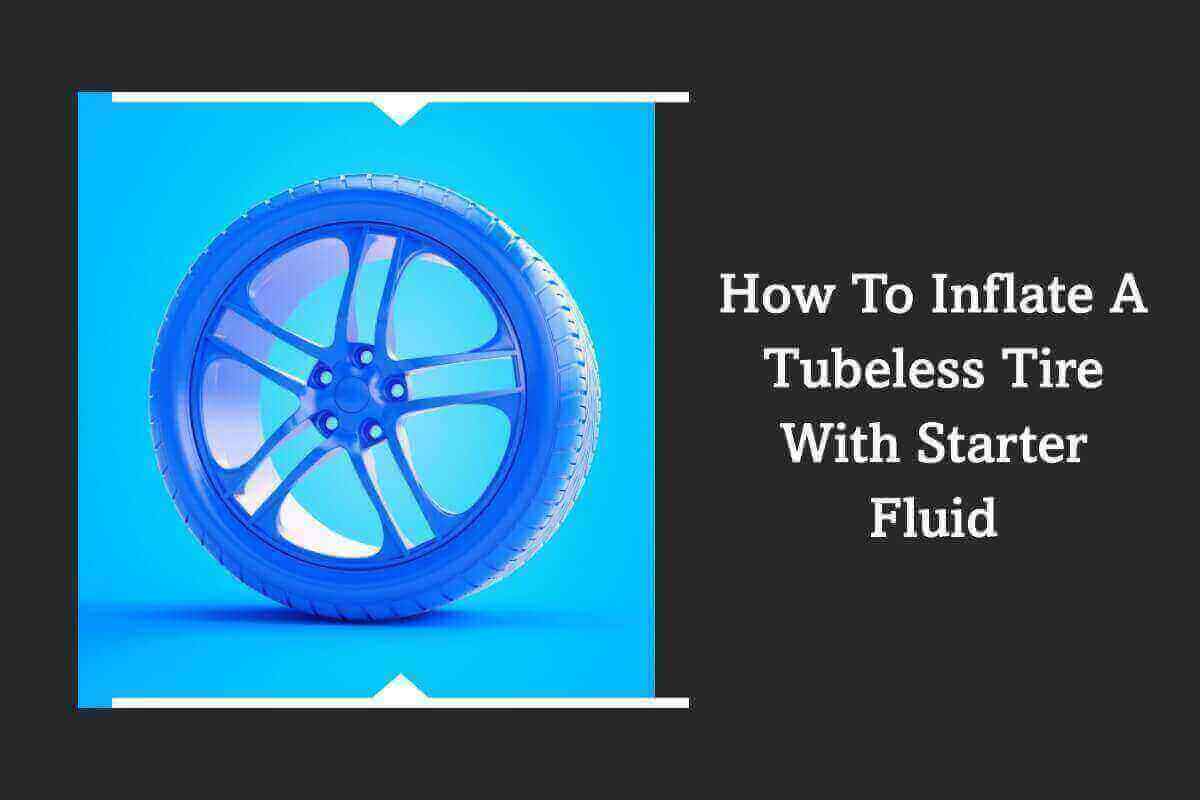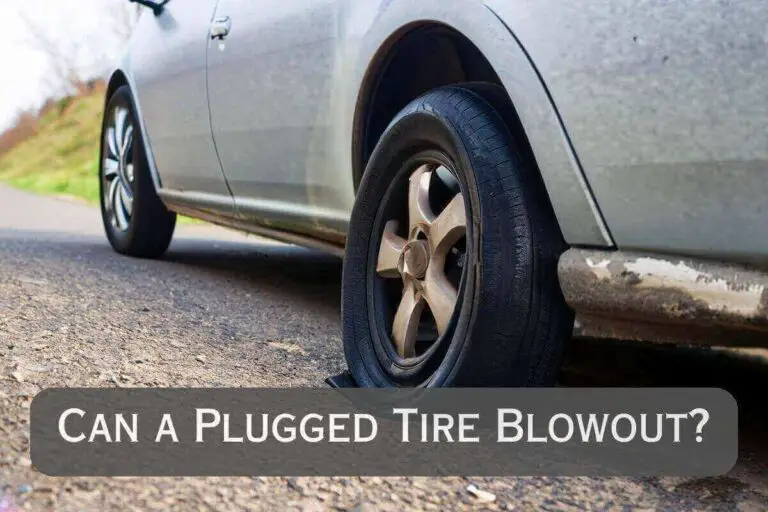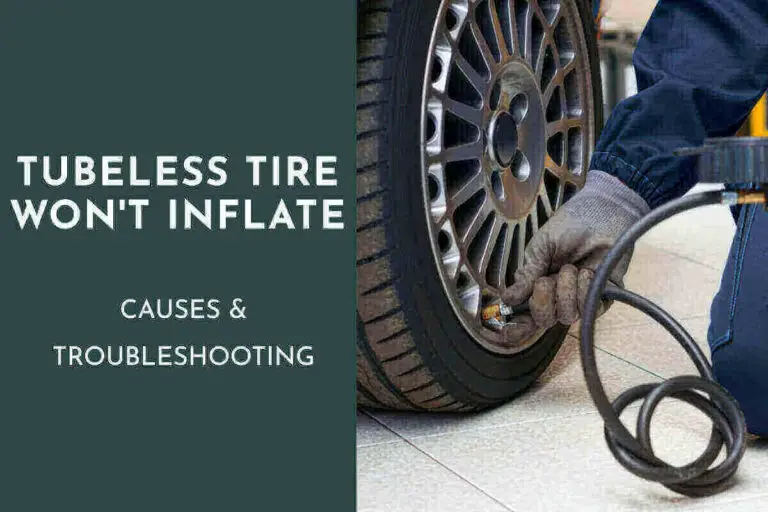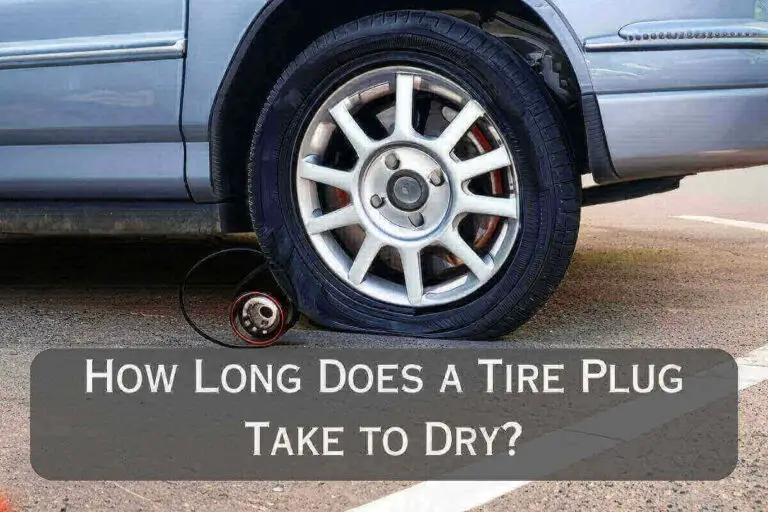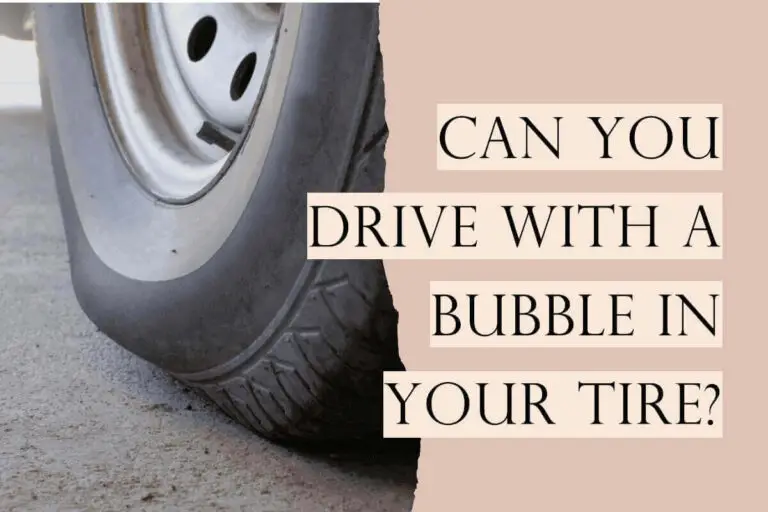Having a flat tire is one of the most frustrating experiences for any driver. But if you have tubeless tires, you can save time and headaches by learning how to inflate a with starter fluid.
This article will show you step-by-step how to do just that, so even if you don’t know much about cars, you’ll be able to get your tire inflated quickly and easily.
How To Inflate A Tubeless Tire With Starter Fluid
Changing a tire can be intimidating and seem difficult, but it is quite simple. We’ll walk you through the process of inflating a tubeless tire with starter fluid. With just a few steps and some basic supplies, you’ll be able to inflate your tire in no time! We’ll explain how to do it safely and effectively so you can get back on the road quickly.
Step 1: Prepare the Rim
Inflating a tubeless tire with starter fluid requires the right tools and some preparation. Step one in this process is to prepare the rim of your wheel for inflation.
- Start by thoroughly cleaning the rim and removing any rust, dirt, or debris that may be present.
- It will help ensure a tight seal for the tire when you inflate it later in the process.
- If there are any burrs or sharp edges on the rim, use sandpaper to smooth them out.
- Once you’ve cleaned and smoothed out your wheel’s rim, dry it off completely before continuing to step two.
Step 2: Insert Sealant and Valve Stem
Inflating a tubeless tire can seem like an intimidating task. However, it’s easy to get the job done with the right tools and knowledge. Step two of inflating a tubeless tire with starter fluid involves inserting some sealant and valve stem into the tire.
- A sealant is essential to prevent any air loss after inflation.
- This sealant should be inserted through the valve stem on your wheel.
- If your wheel does not already have a valve stem attached, you must install one before continuing with this step.
- After inserting the sealant and making sure that it is properly secured inside, you can move on to step three, which involves inflating with starter fluid.
Step 3: Inflate with Starter Fluid
Inflating a tubeless tire with starter fluid is an easy process that can be done safely and quickly. Step 3 of the process requires some basic materials, but once they are gathered, the job should take at most 10 minutes.
- You’ll need starter fluid and a long-handled lighter or torch to complete this step.
- Starter fluid is available at most automotive stores, so it’s easy to find and relatively inexpensive.
- You’ll want to begin by spraying two short bursts of starter fluid over an area of the tire that has been cleaned off with a rag or towel.
- Next, ignite the torch or lighter near where you sprayed the starter fluid and allow it to heat up for about five seconds until it’s hot enough for use on your tire.
Step 4: Check for Leaks
After completing the first three, it’s time to move on to Step 4: Check for Leaks. This step is essential in ensuring that your tire remains inflated and safe to ride.
- The first thing you need to do is check for any air bubbles around the valve stem.
- It may be helpful to shine a flashlight around its base, too, as this can help detect whether any of the fluid has escaped from the seal.
- You should also make sure that none of the fluid has leaked onto other parts of the rim or tube, as this could cause permanent damage.
- Press down on each side of the tire and inspect for any bulges or soft spots which could indicate leaks in other areas.
Tips for Inflate Tubeless Tire with Starter Fluid
Inflating a tubeless tire can be tricky and time-consuming, but with the right tools, it doesn’t have to be. One method for inflating a tubeless tire quickly and easily is using starter fluid.
Starter fluid is highly flammable, so it’s important to follow the safety instructions carefully when working with it. Here are some tips on how to inflate a tubeless tire with starter fluid.
- First, make sure your wheel rims are clean and free of debris.
- Any dirt or dust on the rim can prevent the seal from forming properly, which will keep the tire from inflating correctly.
- Attach an air hose to the valve stem of your wheel, then spray starter fluid around the rim at least six inches away from where your valve stem is located.
- The sealant is designed to stick to the inside of the rim and create a seal. Start pumping your tire immediately. If you wait too long, the sealant will dry up and be ineffective.
- Continue pumping until you hear a hissing sound. It means you have a good seal between the tire and the rim.
- Now inflate the tire by itself without the tube for about 15 minutes to ensure that the sealant is working well.
Troubleshooting Tips for Tubeless Pumps
Tubeless pumps are great for bicycle tires, providing a secure and reliable inflation system. But just like any other device, they can sometimes malfunction or suffer from air leaks. If you’re having trouble inflating a tire with starter fluid, here are some helpful troubleshooting tips to get you back on the road in no time.
- Check all connections and valves to ensure everything is properly sealed and connected.
- Then inspect the pump for any damage or wear-and-tear, such as cracks, tears, or signs of leaking air.
- Make sure all parts are in working order before attempting to inflate your tire again with starter fluid.
- It’s also important to check the manufacturer’s instructions for the proper setup and use of your tubeless pump.
The above tips should help you get back on the road, but if your tire still isn’t holding air after doing all of the above, it may be time to replace it. Contact a bicycle shop or call a tire retailer and ask for advice about choosing an appropriate replacement.
Benefits of Starter Fluid
Starter fluid is a great way to inflate tubeless tires. Its effectiveness and versatility make it an ideal choice for many cyclists. Not only does it save time, but it also provides several other benefits that can enhance any ride.
When used correctly, starter fluid is incredibly efficient at inflating your tires. It’s powerful enough to quickly fill large-volume tires while still being gentle enough not to damage the tire or rim. Plus, its small size makes it easy to carry in a bag or pocket without taking up too much space.
Moreover, starter fluid is also highly affordable and widely available in most automotive shops and bike stores. With its ability to provide quick inflation as well as its portability and affordability, starter fluid offers cyclists of all levels an excellent option for safely inflating their tires before each ride.
Can you bead a tire with starting fluid?
Inflating a flat tire can be a hassle, and dealing with the mess of an inner tube is the last thing anyone wants to do. But what if you could bead a tire with starting fluid? Beading your tires with starting fluid instead of air might seem counterintuitive, but it works! Here’s how to inflate your tubeless tires using starter fluid in just a few easy steps.
- First, locate your valve stem and take out the valve core.
- Next, insert the nozzle of the starting fluid into the valve stem and spray for about 10 seconds.
- As the starting fluid fills up inside of the tire, it beads around and seals off any holes or leaks that might exist in your sidewall.
- The starting fluid will evaporate quickly, and your tire should be fully inflated.
- Repeat these steps for all of your tires before you head out on the trail or track.
Conclusion – How To Inflate A Tubeless Tire With Starter Fluid
It has become clear that this is a fast and easy way to pump up an otherwise flat tire. In order for your repair job to be successful, you must ensure that you have all the necessary supplies, including a can of starter fluid, an air compressor, and a bicycle pump. Once these materials are in hand and you know how much air pressure is needed in the tire, then inflating your tire is as simple as following the above steps.
It should also be noted that while starting fluid can provide quick results when filling up tires with low air pressure, it is not recommended for use more than once or twice because it can damage rubber seals on the wheel rim.
FAQs
How Do You Inflate A Tubeless Tire That Is Not Sealed On The Rim?
If the tire isn’t sealed on the rim, you won’t be able to inflate it with a traditional pump. Instead, you’ll need an air compressor with a pressure gauge. Attach the compressor to the valve stem and slowly add pressure until the tire is fully inflated. Make sure to check the recommended PSI for your tire before inflating.
Can You Inflate Tubeless Tires Without Sealant?
Yes, you can inflate a tubeless tire without sealant. However, it won’t be able to hold the air pressure for very long, so you’ll need to keep an eye on it and top off the air pressure as needed. You’ll also need to add sealant eventually if you want your tire to remain airtight.
Why Won’t My Tubeless Tires Hold Air?
It could be a few things. Check for any punctures in the tire, and make sure the rim tape is installed correctly. If the tires are still not holding air, you may need to add some sealant to help them seal properly. If that doesn’t work, it could be an issue with your valves or rims.
How Do You Set A Tire Bead With Starter Fluid?
It’s pretty simple! First, ensure you have all the necessary tools to do the job. You’ll need a tire bead setter, starter fluid, and other items. Next, spray some starter fluid onto the tire’s bead and let it sit for a few minutes. Use your tire bead setter to force the bead onto the rim.
What Can I Use To Seal A Tire Around The Rim?
You can use tire sealant to help seal a tire around the rim. It’s a liquid that you pour into the tire, and it will create an airtight seal. You can find tire sealant at most auto parts stores or online. Check your tire pressure after using it to ensure the seal is secure, and your tires are properly inflated.
How Do You Pop A Tire On The Bead With Starting Fluid?
Popping a tire on the bead with starting fluid is a great way to get it done quickly. All you need is an aerosol can of starting fluid and a lighter. Start by spraying the starting fluid around the circumference of the tire’s bead, then light it with the lighter. The heat from the flame will cause the tire to expand and pop onto the rim. Be sure to keep your face away from the flame.

